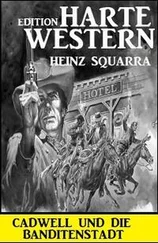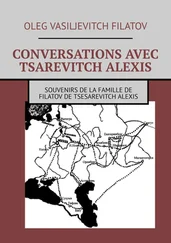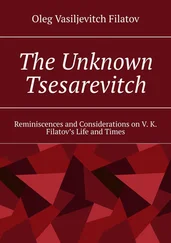Knowledge of Russian allowed Schliemann to come to Russia as a commercial representative. One year later, in 1847, he took out Russian citizenship. The newly-minted “Andrei Aristovitch” founded his own company and quickly grew rich supplying the indigo dye and Chilean saltpetre. He was into any business that promised profit. Of course, at the time of “gold fever”, Schliemann was in America, buying gold sand from gold diggers for a mere song and thus doubling his fortune. During the Crimean War, Schliemann was selling weapons to both sides, but he made a greater profit supplying cardboard-soled boots to the Russian army. Before abolition of serfdom in 1861, Schliemann bought up paper necessary for printing large posters with the manifest to resell it to the Russian government at an exorbitant price…
In 1864, having left his Russian wife Yekaterina Lyzhina and his three children in St. Petersburg, Schliemann set off for a journey around the world. He visited the ruins of Carthage in Tunis, remnants of Pompeii in Italy, ancient temples in India and Ceylon, the Great Wall of China and the Aztec ruins in Mexico. Shocked with everything he had seen, he signed up for to attend lectures on antique history and archaeology at Sorbonne. In 1868 Schliemann made his first excavation on the Greek island of Ithaca, which lasted for only two days. Having found a couple of shards in the ground, Schliemann, without a shadow of a doubt, passed them off as items that once belonged to King Odysseus himself.
After that the businessman visited Mycenae and the Asianic coast of the Dardanelles, where having missed the ship to Istanbul, he got acquainted with American consul Frank Calvert. Schliemann published the results of his journeys in his book Ithaca, Peloponnesus and Troy, for which he managed to obtain a doctoral degree from the so-so University of Rostock. The degree was conferred on him in absentia, as the competitor was visiting America to deal with issues of getting American citizenship and divorcing his Russian spouse. [12] Under the Russian law Heinrich Schliemann and Yekaterina Lyzhina remained married.
However, the scientific European community did not take his research seriously, and Schliemann decided to submit some foundational proof, having dug out an ancient city or, at least, something that could have possibly passed off as the traces of it…
Was Schliemann the first to search for the ancient Ilion in the North-Western Turkey, as it is often announced? No way. Even the laurels of the first explorer of Hisarlik are not rightfully his.
As it is set now, it was not difficult to find Troy; supposing that city was mighty enough to fight against the unified forces of the entire Greece, it should have controlled main trade ways, and, thus, it should have been in a prominent location. Moreover, “nature abhors a vacuum”, and if there is a city on a crossroad of trade routes, it will be restored after any defeat. So, today there must be a city engaged in the same business as Troy was in due time, monitoring routes and growing rich. It is not necessary to be as wise as Solomon to guess that this city is Constantinople-Istanbul, which is great due to the fact it controls the straits from the Black and Marble seas into the Aegean and Mediterranean Seas. There are two straits; Istanbul is located on the Bosporus, and its great predecessor apparently was on the Dardanelles. The geographic details in Homer’s poems point at them. At the same time, as Constantine the Great noted, being on the Hellespont is even more favourable, as not only the sea-gate but also the land-gate between Europe and Asia can be controlled. There was no better place for a city.
After it becomes clear, it is necessary to estimate and consider how far the sea had moved over three thousand years after the events described, and to look for some hills and fortress ruins at the entry to the Dardanelles, and to hear some legends from the locals…
The first scientific attempts to determine the precise position of Troy date back to the 18[[th]] century. In 1742 and 1750 the Englishman Robert Wood made two trips to the Troad and put his impressions in the book An Essay on the Original Genius and Writings of Homer. Despite he believed it was senseless to search for Troy, as it had been destroyed to the ground, Wood was the first person to suggest that the place where Troy had been changed for the worse since the ancient times. The harbour became silted, and the rivers changed their flow. His book was reissued 5 times in four languages and caused some public reaction of the scientific community.
In 1768, 1 year before Robert Wood’s book was issued, Baron Johann Hermann, a student of the glorified nationalist Johan Winckelmann, the founder of modern ideas about antique art, travelled around the Troad. After this journey he was the first to voice the hypothesis that ancient Troy must have been in the area of the Hisarlik Hill, located several kilometers away from the coast. The German cartographer Frantz Kauffer (1793), the mineralogist Edward Clark (1801), who later became a Cambridge University professor, and Charles McLaren (1822), the author of The Theses on the Topography of the Trojan War, also identified Hisarlik as the location of ancient Troy.
Jean-Baptiste Lechevalier, a French archaeologist, put forward another hypothesis. In 1785 he walked all the way from Hellespont to the Ida Mountain Range with the Iliad book in his road bag and using Wood’s book as a guide. Lechevalier was convinced that Homer described the geographic features of the peninsula rather accurately. The French scientist decided that the spot was close to the village of Bunarbashi (Pinarbashi) in the Scamander River Valley.
In 1864 the Austrian diplomat and traveler Johann Georg von Hahn decided to practically check the hypothesis of Lechevalier. Having started an excavation near Bunarbashi, von Hahn discovered the traces of some settlement. However, it became clear later that those remnants of ancient buildings dated back to a later period from 7[[th]] to 5th centuries B.C.
In one year Frank Calvert led a test excavation in Hisarlik. Two generations of his family had lived near the Troad already, and Calvert had perfect knowledge of the region. But the real revolution in his world-view happened after 1849, when he met the famous Russian scientist Pyotr Chikhachev. Chikhachev, better known in Russia as the pioneer of the Kuznetsk coal basin, had authored about 100 scientific works on geology and paleontology of Asia Minor, and the most detailed map of the Troad was based on his topographic studies. By accompanying Chikhachev on his expedition, Calvert gained invaluable experience and knowledge in the field of archaeology and geology, but, most importantly, he started to believe the Russian scientist’s statement that Troy should have been searched in the depths of Hisarlik, a part of which he acquired later.
Calvert came to believe that Troy should have been looked for in the depths of Hisarlik after the famous Russian geographer Pyotr Chikhachev, whose role in the discovery of this ancient city has still not been acknowledged by the descendants.
Chikhachev’s role in the discovery of Ilion remained unnoticed by the descendants, and all the victorious palms passed to Schliemann, who in turn claimed them for himself rather than Calvert. The man who identified the location of Troy was undeservedly forgotten, as, alas, is a frequent occasion in history. Today only the Altaic mountain range named after him and the commemorative plaque in Gatchina remind us of the merits of this scientist.
While making the digging in Hisarlik in 1865, Calvert came across traces of the Temple of Athena and of the city wall that built by Lysimachus. At that the diplomat’s financial opportunities exhausted. Calvert had hoped to continue the search after meeting the conceited millionaire Schliemann, who believed that the ruins of Troy were in the spot, where Lechevalier had identified them – in Bunarbashi. Later Calvert affirmed that in a letter to The Guardian newspaper: “When I first met Doctor [Schliemann] in August, 1868, the Hisarlik and the Troy location were new subjects for him”. [13] V.P. Tolstikov, “Heinrich Schliemann and Trojan Archaeology”, The Treasures of Troy. The Finds of Heinricha Schliemann. Exhibiton catalogue (Мoscow: Pushkin State Museum of Fine Arts: Leonarde Arte, 1996); p. 18.
Schliemann denied everything and even launched a full-scale war in the press against Calvert, charging him with lying. There are no document dated before 1868 that would testify to Schliemann being engaged in the Trojan issue at all. According to the historian Andrei Strelkov, Schliemann simply “tripped over Troy” during one of his travels. [14] А.V. Strelkov, “The Legend of Doctor Schliemann” in G. Schliemann, Ilion. The city and country of the Trojans . Vol. 1 (Мoscow: Central Polygraph, 2009); p. 11.
However, the businessman presented it all as if he had been looking for Troy for all his life and selected Hisarlik as the site to excavate the ancient city, basing on hints of Homer. To eliminate any mentioning Calvert in the history of the Troy’s discovery, Schliemann invented a story about the dream of his childhood and the illustrated book, [15] D.A. Traill, Excavating Schliemann: Collected Papers on Schliemann (Atlanta, GA: Scholars Press, 1993), p. 40.
and introduced himself as a man truly possessed by Homer’s epos, and even gave the children born of his new Greek wife Sophia the names of Engastromenos, [16] Seventeen year old Sophia Schliemann was practically bought for 150,000 francs from her uncle, a Greek bishop Teokletos Vimpos.
Agamemnon and Andromacha.
Читать дальше











